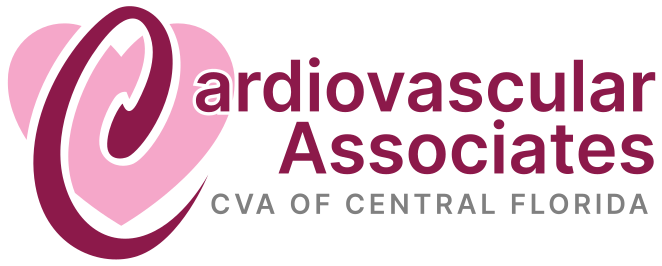Coronary Artery Disease
What Is Coronary Artery Disease?
CAD develops when the primary vessels (coronary arteries) that supply your heart with blood have trouble sending enough blood, oxygen, and nutrients to your heart muscle.
For many people, the first coronary artery disease symptom you’ll experience is a heart attack. The signs of a heart attack include:
- Chest pain or discomfort (angina)
- Weakness
- Nausea
- Sweating
- Pain or discomfort in the arms or shoulder
- Shortness of breath
Causes & Symptoms of Coronary Artery Disease
Coronary artery disease is generally caused by cholesterol deposits (plaques) in the heart arteries and inflammation. Over time, plaque development causes the inside of the arteries to narrow, which can either completely or partially obstruct blood flow, a process called atherosclerosis.
Because coronary artery disease is a chronic condition, you may not experience any CAD symptoms or signs for a very long time. Plaque can take years to build up in your arteries.
The most common CAD symptoms include:
- Stable angina: This is temporary chest pain or discomfort that comes and goes in a predictable pattern.
- Shortness of breath: You may have trouble breathing, especially when participating in light activities.
- Heart attack: This is a combination of symptoms, including chest or arm pain.
You may also start to feel dizzy or lightheaded, have heart palpitations, begin to feel tired, nauseous, and weak. It’s important to call for help or call 911 if you begin experiencing any coronary artery disease symptoms.
Testing & Diagnosis for Coronary Artery Disease
Getting an accurate diagnosis for coronary artery disease can involve various tests. Your doctor will begin with a physical exam, where they will listen to the heart and check for signs of CAD such as abnormal heart sounds. They will also ask about risk factors like high blood pressure, cholesterol levels, smoking, family history, and more. If CAD is suspected, further testing will be ordered to confirm and evaluate the extent of arterial blockages. Diagnostic measures may include:
- Blood Tests
The doctor may order blood tests, which can check for markers like lipid levels and C-reactive protein that may indicate CAD risk. - Electrocardiogram (EKG/ECG)
An EKG or ECG records electrical signals of the heart to detect irregularities. - Stress Test
Stress tests monitor the heart rate and blood pressure while a patient is exercising to see if blood flow to the heart is adequate. - Echocardiogram
This test uses ultrasound waves to create images of the heart's structure and function and show damaged areas. - Nuclear Scan
Radioactive material is injected into the bloodstream to highlight blood flow and expose blockages with special cameras. - Cardiac CT Scan
A cardiac CT scan provides detailed 3D x-rays of the heart's blood vessels to check for narrowing. - Cardiac Catheterization
For this procedure, a thin flexible tube is inserted into an artery and threaded to the heart. Dye is injected so blockages can be visualized via x-ray. - Coronary Angiography
This specific catheterization procedure uses dye and x-rays to view the coronary arteries and is considered the gold standard for diagnosing CAD.
Treatments for Coronary Artery Disease
Fortunately, there is a wide range of treatment options for coronary artery disease, and it begins with lifestyle changes. You may also be asked to take blood pressure and cholesterol medications to help manage your condition.
If you’re experiencing any of the symptoms of coronary artery disease, or exhibit some of the risk factors (like a family history of CAD), you will be asked to manage it by doing things such as:
- Exercising
It’s one of your most effective tools for strengthening the heart muscle and warding off the artery damage from high cholesterol, high blood sugar, and high blood pressure that can lead to heart attack or stroke. - Eating a heart-healthy diet
To optimize heart health, the American Heart Association (AHA) recommends maintaining a diet that emphasizes a variety of fruits and vegetables, whole grains, low-fat dairy products, and skinless poultry. - Stop smoking
Chemicals in cigarette smoke cause the blood to thicken and form clots inside veins and arteries. - Limit alcohol
Excessively drinking alcohol can lead to high blood pressure, heart failure, or stroke. It may also contribute to a disorder that affects the heart muscle called cardiomyopathy.
If the recommended non-invasive treatment therapies do not prove to be effective, a surgical procedure may be recommended by your doctor. Your cardiologist will talk with you about which treatment plan is best for you. Surgical treatment options include:
- Coronary angioplasty
This procedure is also called percutaneous coronary intervention or balloon angioplasty. The balloon is used to stretch open a narrowed or blocked artery. A stent is often placed during or immediately after angioplasty. A coronary artery stent is a small, metal mesh tube that expands inside a coronary artery to widen it. - Coronary bypass surgery
Heart bypass surgery creates a new route, called a bypass, for blood and oxygen to go around a blockage to reach your heart. During the procedure, your surgeon will remove a healthy section of artery or vein from the wrist, chest, or leg. The coronary artery is then connected to it immediately above and below the blockage. This allows blood to bypass (get around) the blockage.
Photo Gallery
Video Gallery
Testimonials
Photo Gallery
Meet Your Cardiovascular Specialists
In Search of Care? Request an Appointment



